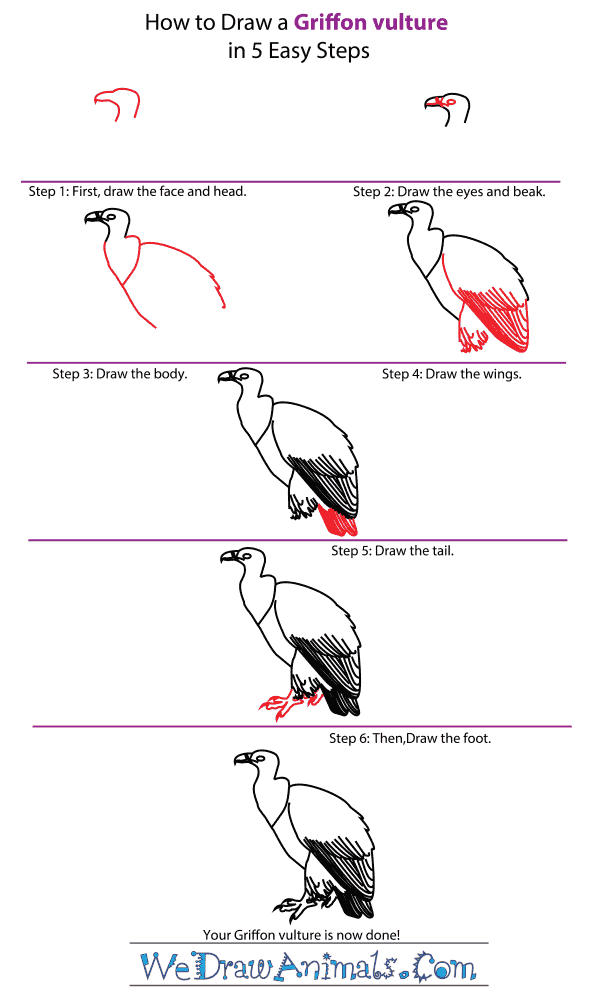In this quick tutorial you'll learn how to draw a Griffon Vulture in 6 easy steps - great for kids and novice artists.
The images above represent how your finished drawing is going to look and the steps involved.
Below are the individual steps - you can click on each one for a High Resolution printable PDF version.
At the bottom you can read some interesting facts about the Griffon Vulture.
Make sure you also check out any of the hundreds of drawing tutorials grouped by category.
How to Draw a Griffon Vulture - Step-by-Step Tutorial
Step 1: Begin with our griffon-vulture's head. Curve up from the neck to draw the head and make sure the beak is hooked. It catches mice with that!
Step 2: Add detail to the beak, drawing the distinctive bands around the top part of the beak. Also add the eye, one small circle close to the beak will do.
Step 3: Continue on with the rest of the body. Curve a line from the base of the neck, adding some ridges along the bottom to show where the feathers go. Draw another slightly curving line for its belly.
Step 4: Now draw the wings. These will be broad, upside down triangles sweeping down from the griffon-vulture.
Step 5: Now let's draw a tail. This will be a jagged, upside down triangle right between the feathers and where we will draw the feet in a moment.
Step 6: Finally, draw the feet. Our griffon-vulture will use these to gather materials to use when it builds its nest!
Interesting Facts about the GRIFFON VULTURE
The Griffon Vulture is a member of the bird family and the scientific term for them is Gyps fulvus. Another common name for it is Old World Vulture. This animal is a Bird of Prey relative, of which this particular type feeds mostly on animals that have already been dead. They live in southern Europe, northern Africa, and western Asia. It has a white head, short tail, and yellow beak, with a buff light brown body and dark brown wings edges.
Did you know?
- This species is 4 feet long.
- They have a wingspan over 9 feet wide.
- The bird can weigh over 33 pounds.
- This animal can live to over 41 years of age.
- They only lay 1 egg.
- This species can fly up to 20,000 feet.
They travel in flocks and nest on faces of cliffs, where they grunt or hiss, especially when eating. When they find a crevice in the side of a mountain during mating season, they begin breeding. These activities occur in separate colonies, where they are dispersed as residents in exclusive dwellings. The young birds can migrate to vast distances. Typically they will live longer when in captivity.







